Have you ever landed on a website that felt like it read your mind? If so, you've experienced firsthand what effective AI strategy for websites can offer users: A sense of comfort, ease, and recognition. I'm always impressed with organizations that can deploy an artificial intelligence (AI) strategy to deliver an exceptional user experience, and I'm willing to bet that you are, too.
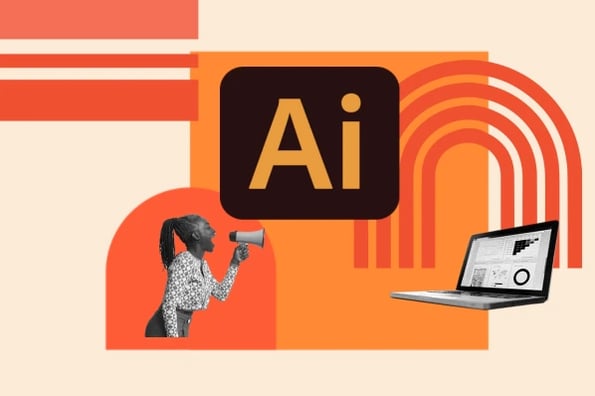
 Developing an AI strategy for websites is no easy feat — after all, artificial intelligence is still evolving, and determining which products best suit your needs can be tricky. I chatted with three experts to get the full lowdown on creating an AI strategy for websites. The main takeaway you'll gather from our conversations is that an effective AI strategy allows your website to understand your users and anticipate their actions before they do.
Developing an AI strategy for websites is no easy feat — after all, artificial intelligence is still evolving, and determining which products best suit your needs can be tricky. I chatted with three experts to get the full lowdown on creating an AI strategy for websites. The main takeaway you'll gather from our conversations is that an effective AI strategy allows your website to understand your users and anticipate their actions before they do.
What is an AI strategy for websites?
You know it's essential to use AI on your website, but what exactly is an AI strategy for a website? Here's how I like to describe it: Your AI strategy details the plan you have developed to achieve your goals through the implementation of artificial intelligence. Simply put, your strategy details how you will approach leveraging AI on your website.
AI is More Than Just a Buzzword
As AI-infused website strategy gains more momentum, I think there are a few misconceptions about the technology. No, it isn't powerful enough to not require human supervision or interaction. Yes, it can sift through data, pick up on patterns, and get ahead of what your visitors want before they click — and almost immediately.
According to Jennifer Lux, Head of Conversion Rate Optimization at HubSpot, one significant impact of artificial intelligence is how it revolutionized how marketers approach the digital customer journey. "With its predictive analytics and machine learning capabilities, AI unlocks a whole new level of personalization and targeting at scale," she shares. "AI has the power to uncover hidden patterns and correlations in user behavior data, eliminating human bias and allowing us to identify trends. AI provides valuable guidance for optimizing conversion funnels, refining messaging, and enhancing user experiences."
HubSpot uses the information you provide to us to contact you about our relevant content, products, and services. HubSpot will share the information you provide to us with the following partners, who will use your information for similar purposes: 10Web. You can unsubscribe from communications from HubSpot at any time. For more information, check out HubSpot's Privacy Policy. To unsubscribe from 10Web's communications, see 10Web's Privacy Policy.
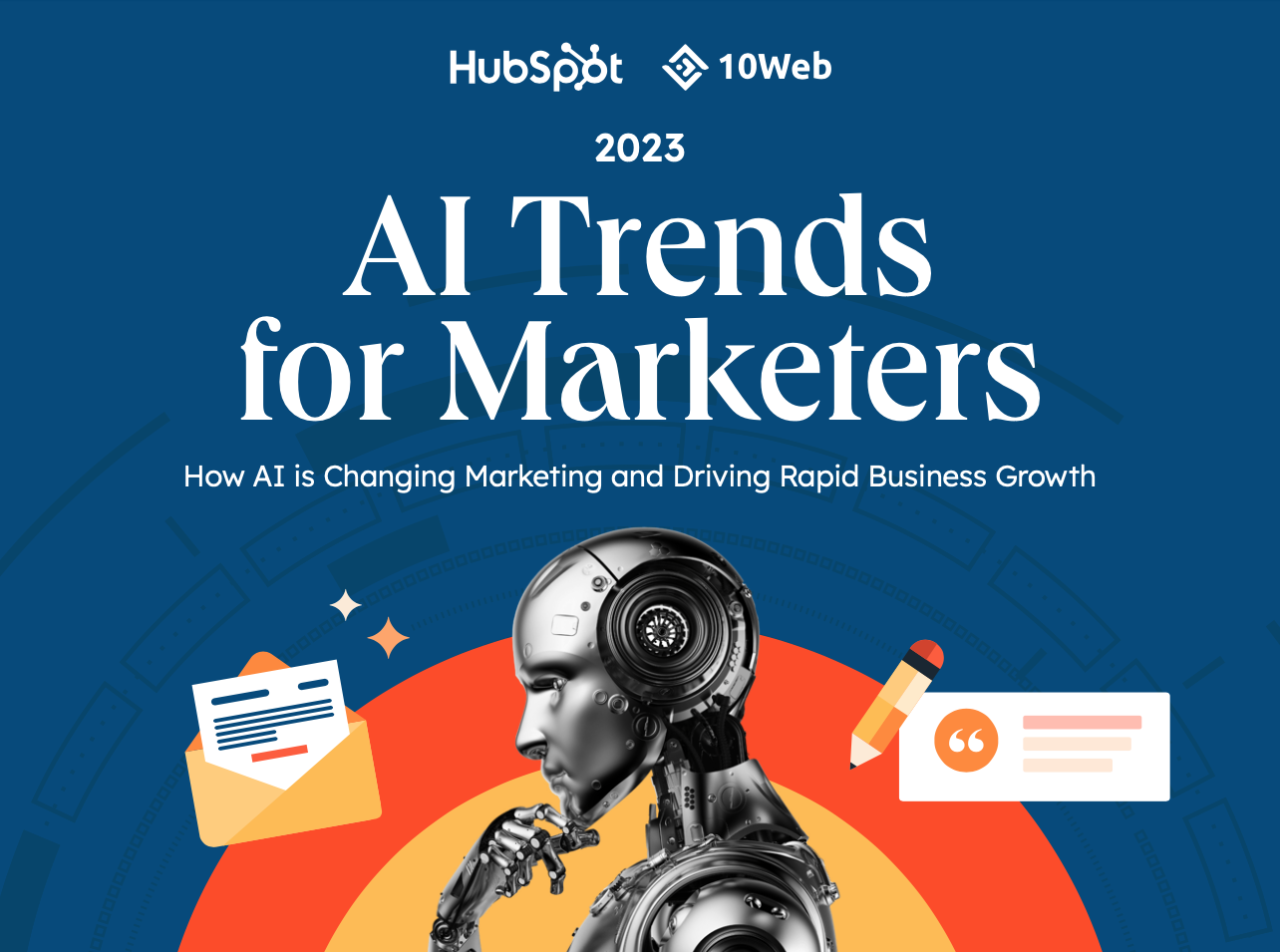
The State of Artificial Intelligence Report
New research into how marketers are using AI and key insights into the future of marketing.
- Marketing AI Tools
- Practical Tips
- Trends and Statistics
- And More!
Why is having an AI strategy for websites so crucial?
Wondering why building out an AI strategy is helpful or even necessary? You're not alone. You may be unsure if it's too early to implement this on your site, considering how new the technology is. In my opinion, early adapters of AI have an opportunity to use the technology to stand out and offer a more cohesive, fulfilling user experience. That being said, here are the main reasons why having an AI strategy for your site is necessary.
Unlock personalization.
According to David Groechel, Senior Marketing Technical Manager - AI at HubSpot, the right time to implement an AI strategy on your site to unlock personalization is now — and if you ignore this opportunity, your site could become obsolete. "As AI gets more and more ingrained in our lives, things will start to become hyper-personalized to the end user," he says. "If your website is not personalized towards the visitor, you'll fall behind the pack. Others will be able to provide more value than you can, capturing the user's interest."
Lux adds that using AI to create a more personalized experience for users also eliminates bias. "AI also removes human bias as human-led personalization is often based on assumptions or personal experiences that may or may not be true - and may or may not be true in different regions globally," she shares.
Get users the answers they want more efficiently.
Another perk of implementing an AI strategy for your website is that it allows you to serve your users better. For instance, through AI-assisted 1:1 messaging, users will be able to quickly get the answers they need with no interference from your team. "Adding AI to a website unlocks 1:1 messaging at scale and does so in a way that is dynamic," says Lux. "The model uses the most relevant and recent information to serve contacts the right content at the right time, far faster than a human could analyze big data sets."
Give users exactly what they want.
One of AI's main superpowers is that it gives users exactly what they want when they want it. "By leveraging user data and historical behavior, AI algorithms can generate personalized recommendations that cater specifically to each individual's preferences and needs," says Lux.
Wondering what that looks like in practice? Lux continues, "Imagine a future where each website visitor has a unique experience tailored precisely to their pain points and needs. AI-powered machine learning can take us there, ensuring that we deliver the best possible experience for each visitor, whether it's suggesting products, offering personalized content, or guiding them through a conversion funnel. This approach will result in higher user satisfaction and increased conversions."
Ultimately, by giving users exactly what they want and need, you're simplifying their experience. And that goes a long way. "The web experience today can feel overwhelming with so many pages to visit. It feels like searching for a needle in a haystack," says Solaski. "[With AI,] UIs will be clean, only showing users content that is relevant to them at that moment in time."
(Psst: If you want some examples of how brands are currently using AI, this post demonstrates what AI looks like in action.)
HubSpot uses the information you provide to us to contact you about our relevant content, products, and services. HubSpot will share the information you provide to us with the following partners, who will use your information for similar purposes: 10Web. You can unsubscribe from communications from HubSpot at any time. For more information, check out HubSpot's Privacy Policy. To unsubscribe from 10Web's communications, see 10Web's Privacy Policy.

The State of Artificial Intelligence Report
New research into how marketers are using AI and key insights into the future of marketing.
- Marketing AI Tools
- Practical Tips
- Trends and Statistics
- And More!
Gain a competitive edge.
Ultimately, the reason for implementing an AI strategy on your website is to help it excel beyond the competition. "We're in the middle of a digital transformation, and companies who embrace this change will quickly surpass those who don't," says Lucy Solaski, Accelerated Leadership Program at HubSpot.
"As HubSpot's founder, Dharmesh Shah, said back in April 2023, generative AI is, 'too big to ignore… it's the single largest opportunity and biggest kind of tech Paradigm Shift we've seen since the internet originally came out.' Generative AI opens up a huge opportunity for smaller companies, who can pivot more quickly and take bigger risks, to iterate faster and gain a competitive advantage over larger incumbents."
Make proactive optimization decisions.
Last but certainly not least, having an AI strategy in place for your website enables it to offer proactive optimization. "AI's predictive analytics capabilities enable us to anticipate user behavior and make proactive optimization decisions," shares Lux. "By analyzing historical data, AI algorithms can forecast future user actions, such as conversion likelihood and click-through rates. This foresight empowers us to make data-driven CRO decisions, allocate resources more effectively, and ensure our message reaches the right user at the right time. With this approach, we expect significant improvements in conversion rates."
Identifying Your AI Needs
So, you've committed to building an AI strategy for websites you manage. Great choice — I'm confident you'll quickly see why this is the right decision. It's easy to feel overwhelmed with so many tools on the market. The best way to tackle building out your strategy, however, is to nail down exactly what you're trying to achieve with the help of AI.
"Always start with your end goal," advises Groechel. "Do you want more signups, purchases, conversions on content offers? Then, work backward from there. Ask yourself, 'Can AI help me accomplish my goal?'"
Once you ask yourself that question and the answer is yes, consider the AI tools available that can help you reach it. For example:
-
Want more interaction on your site? Look for AI tools that personalize user experiences or offer interactive features like quizzes or polls.
-
If increasing revenue is your aim, consider AI-driven recommendation engines or smart analytics to target potential buyers more effectively.
-
Aiming for stellar service? AI chatbots or intelligent support ticketing systems can be your go-to tools.
Trust me: It's imperative you align your AI tools with your objectives. If you don't, your AI strategy will feel disjointed — and your users will take notice. Groechel agrees. "Don't throw AI at a problem just to use AI," he says. "You'll want to clearly define your problem or end goal and then find a solution to reach your end goal. If AI helps you get there, then it's a good fit. Integrating AI on your website should feel 'magical,' and the end user shouldn't even know AI is integrated."
I know there's a lot to keep up with in the world of AI — but you're doing great. Next up, I'll walk you through the process of implementing an AI strategy for websites.
HubSpot uses the information you provide to us to contact you about our relevant content, products, and services. HubSpot will share the information you provide to us with the following partners, who will use your information for similar purposes: 10Web. You can unsubscribe from communications from HubSpot at any time. For more information, check out HubSpot's Privacy Policy. To unsubscribe from 10Web's communications, see 10Web's Privacy Policy.

The State of Artificial Intelligence Report
New research into how marketers are using AI and key insights into the future of marketing.
- Marketing AI Tools
- Practical Tips
- Trends and Statistics
- And More!
Your Step-by-Step Guide to Implementing an AI Strategy for Websites
Buckle up: You now have all the knowledge you need on what an AI strategy is, why it's essential, and even how to decide which tools you'll use to meet your goals. Now, I'll walk you through the actual implementation of your strategy.
.webp?width=650&height=433&name=My%20Featured%20Image%20Template%20Backgrounds%20(5).webp)
Identify and test a key AI feature.
To start, consider which AI tools (and, subsequently, the features these tools offer) align with your immediate goals. Here's my advice: Start small. Pinpoint just one AI tool that meshes with what you're trying to achieve right now. Maybe it's a chatbot to streamline customer interactions or a sleek AI analytics tool to get the lowdown on your site traffic. Either way, find a tool that resonates with your mission and work with it.
Solaski, a member of the team that recently developed a roadmap for AI innovation on HubSpot's website, shares that the first question the team asked was, 'What does the future look like?'
"We held brainstorming sessions grounded in the pain points of the web experience," shares Solaski. "Doing so allowed us to think creatively while staying focused on the customer. Once we'd articulated our vision for the future, we worked backward from it to create a roadmap of website AI experiences that'd set us up for success."
This stage is all about dipping your toes in the water, not diving headfirst into the deep end. I'm talking about a small-scale trial run to see how this feature plays out on your site. Get a feel for its features and see how your audience reacts. Believe me, this approach can save you a lot of headaches down the line. Plus, if you try to implement a bunch of tools at once, it could be tricky to identify which is driving improved engagement or a higher conversion rate. By experimenting with AI tools one at a time, you'll be able to identify which is making an impact.
Also, when considering which tool to implement first, consider how quickly you can deploy it, as Solaski and her team did. "When choosing what to launch first, we focused on experiences that could be rapidly deployed [to] start gathering learnings right away," she says. "We also considered the AI infrastructure needed to power each experience and prioritized those built on foundational AI that could be enhanced for future web experiences."
Evaluate the impact and learn.
Next up, it's all about playing detective with your new AI feature. Once you've got it up and running, it's time to roll up your sleeves and dig into the data. This means keeping a close eye on how it's performing. If you have questions about the tool, reach out to the team that owns it. Remember: This is still an emerging technology. You're not expected to have all the answers.
Gather and organize data on how this AI addition impacts your site. It's not just about feeling good because you've integrated some AI; it's about hard facts. Are users clicking more? Staying longer? Buying more? The statistics don't lie. It's not enough to add an AI tool to your tech stack and give yourself a pat on the back. If the numbers don't suggest it's proving impactful, it's time to try something else.
Research AI providers.
I mentioned the importance of picking a team that's accessible to offer troubleshooting support when you're first getting your AI tool up and running. To do that, you should look into AI providers. The process of researching AI providers doesn't end once you've implemented a tool in your website. This is because you must ensure the tool will grow with your business.
I ask myself a few key questions when researching providers:
-
Can their tools scale as my website grows?
-
How's their customer support – are they there when I need them?
-
Do their services integrate smoothly with what I already have?
Picking the right provider is a big deal. In your search, don't overlook resources like HubSpot's AI Content Assistant. This HubSpot tool is a great addition because it offers a suite of free, AI-powered features that help create remarkable content swiftly and efficiently, especially if content and inbound marketing are at the heart of your strategy.
I've used HubSpot's AI tool for building a landing page, but it can also be included in blog builders, email modules, Chrome extensions, social media modules, and CTA modules. Trust me, taking the time to research and choose wisely here can make all the difference in your AI journey.
HubSpot uses the information you provide to us to contact you about our relevant content, products, and services. HubSpot will share the information you provide to us with the following partners, who will use your information for similar purposes: 10Web. You can unsubscribe from communications from HubSpot at any time. For more information, check out HubSpot's Privacy Policy. To unsubscribe from 10Web's communications, see 10Web's Privacy Policy.

The State of Artificial Intelligence Report
New research into how marketers are using AI and key insights into the future of marketing.
- Marketing AI Tools
- Practical Tips
- Trends and Statistics
- And More!
Integrate AI with your website’s ecosystem.
So you've identified a tool, set it up, gathered data, and even researched how the provider can grow with you. If you're experiencing success, it's time to think about how you'll integrate the tool into your site's pre-existing ecosystem.
I'd caution you against rushing this step. I've learned from many others that once you add an AI feature without thinking about how it fits into our existing setup, you're in trouble. This is because it can have the opposite effect on what you're trying to achieve — instead of streamlining the user experience, it makes it clunkier and feels like you're trying to fit a square peg into a round hole.
Because of this, I advise you to closely examine how these AI tools will mesh with your website's current design, functionality, and user flow. If you're unsure, consider running a focus group to get feedback from users about how they feel the site functions.
It's essential to evaluate how any AI tool, including something as sophisticated as HubSpot's AI Content Assistant, will sync with your site's existing design, functionality, and user flow. Let me tell you, even the most advanced tool needs to complement what you already have in place.
For instance, HubSpot's tool is designed to integrate effortlessly, without disrupting your established processes. This harmony is what we're aiming for – a blend of new capabilities with your site's existing strengths.
So, take your time, test thoroughly, and ensure your AI integration feels like a natural evolution, not a forced fit.
Implement and scale up.
This is where you take your AI game from good to great. With a solid provider in your corner, it's time to elevate your AI approach. When it comes to scaling up, slow and steady wins the race. Don't just hurl everything AI at your site and hope it sticks. That's a recipe for chaos, not success.
Maybe next you can add a more advanced chatbot next, or roll out some smart content personalization. It's all about building on what you've learned from your initial experiments and leveraging the expertise of your AI provider.
I've seen the alternative firsthand. When companies throw AI tools at their site and hope something sticks, it's a disaster from the user experience standpoint.
That being said, don't be afraid to experiment. Not everything will work — but what does will prove worthwhile. Solaski says, "When working in the world of AI, you have to move quickly and create opportunities for iteration. It stuck with me when my manager emphasized a 'fast beats perfect' mentality. AI solutions improve over time as they're fed more data and receive feedback, so it's better to start somewhere than to get stuck in the planning phase. If you wait too long, the solution you want to implement might already be outdated. Plus, by trying something, you're gathering learnings to iterate and improve your AI strategy in the future. As Yamini said in a post about AI: 'Do > Deliberate. Iterate > Strategize.'"
Evolving with AI
I'll be the first one to admit that, with how fast technology is evolving, AI can be really overwhelming. But it also offers a rare opportunity to build a better internet. "AI presents a unique opportunity to reimagine the future of the web experience," says Solaski. "Visitors today often find themselves sifting through many links, looking for what they need, even on the best-designed websites. Meanwhile, they're bombarded by CTAs and pop-ups that feel cluttered at best and annoying at worst. We can fundamentally change how we experience the internet by leveraging Generative AI."
So while ideating and, ultimately, implementing AI strategy for websites is anything but easy, rest assured that your hard work will pay off — and if you do it right, you'll provide users with an unforgettable, intuitive experience unlike any other. Lux says it best. "The best AI strategies will not be detectable to the user, but rather create a seamless, highly-relevant experience, resulting in better user engagement," she says.
Editor's note: This post was originally published in early January 2024 and has been updated for comprehensiveness.


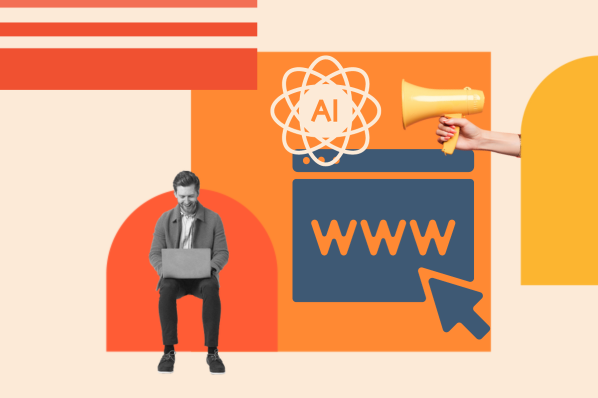
![What is OpenAI’s API? [+ How to Start Using It]](https://blog.hubspot.com/hubfs/open-ai-api.png)
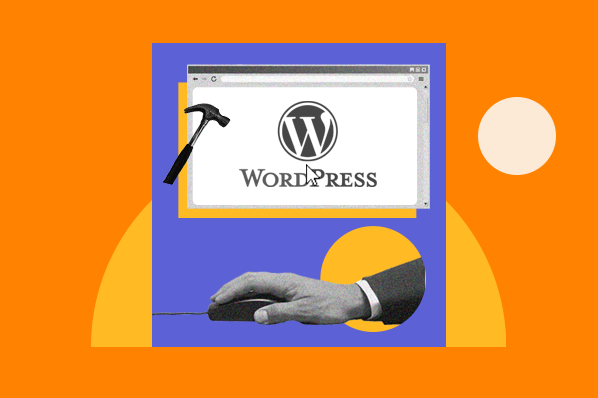
![Why AI Won't Replace Web Designers [+Examples of Why]](https://blog.hubspot.com/hubfs/WILL-AI-REPLACE-WEB-DESIGNERS.webp)
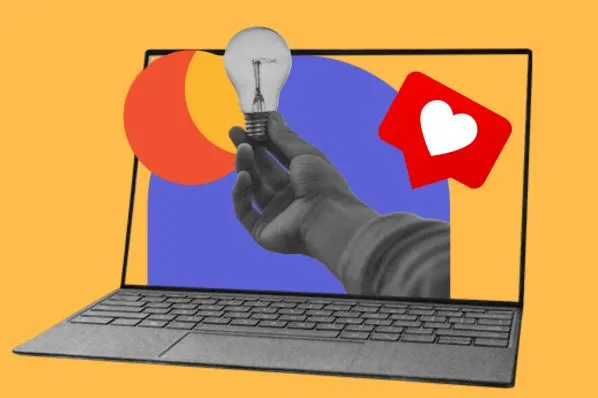


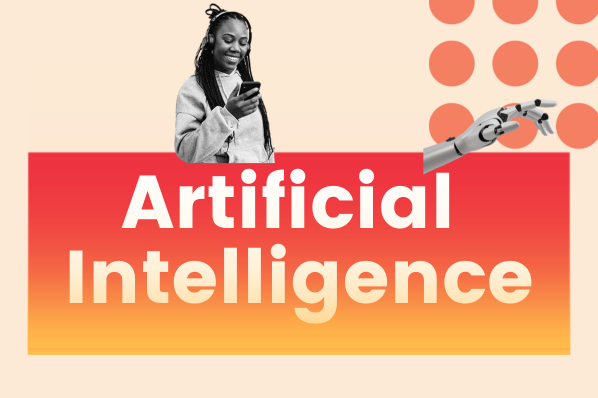
![3 Challenges That AI Causes for Web Professionals [+ How to Navigate Them]](https://blog.hubspot.com/hubfs/ai-challenges-website.webp)